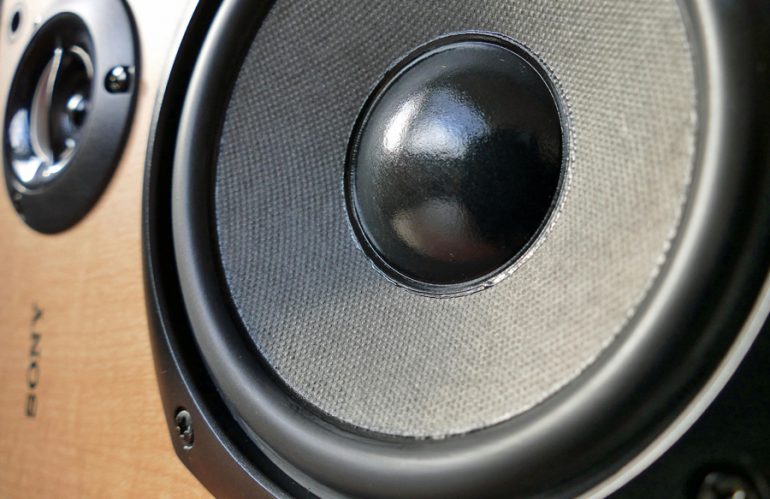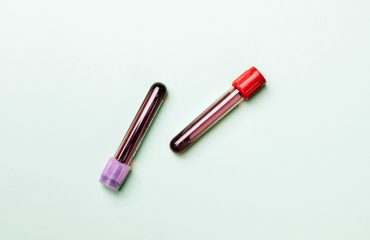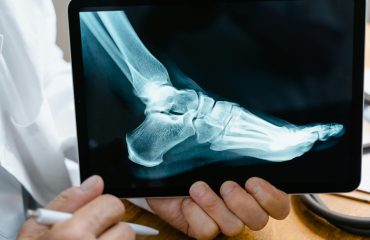Vibroacoustic therapy (VAT) is a type of sound therapy that uses low-frequency sound waves, transmitted through unique massage tables with embedded speakers, to create a therapeutic experience. It can be used as a standalone session or integrated with massage sessions. VAT is available in some spas, wellness centers, and medical clinics. It may also be offered by some therapists who specialize in alternative therapies. Watch for this coming service to be added soon.
The therapy is designed to promote relaxation, reduce stress, and improve overall wellbeing by stimulating the body’s natural healing mechanisms, using low-frequency sound vibrations to induce physiological and psychological changes. Specialized equipment produces sound waves that are transmitted through the body, stimulating the nervous system. These vibrations can create a sense of deep relaxation, promote sleep, and reduce stress.
Benefits of VAT include stress and anxiety reduction, improved sleep quality, enhanced mood and wellbeing, increased focus and concentration, pain relief, and improved cognitive function. VAT is generally considered safe and well-tolerated. Some individuals may experience mild sensations such as tingling, warmth, or dizziness.
Do not use a vibroacoustic table if you have a pacemaker, metal implants, a history of blood clots, or during pregnancy without first consulting a doctor.
Masahiro Kumeta, a cell biologist at Kyoto University, has been investigating the relationship between sound and cells for more than a decade. In 2018, Kumeta and his colleagues discovered that audible sound waves could modulate the expression of various mechanosensitive genes in cultured cells.
Kumeta and his team designed an experiment wherein they played sounds of varying frequencies to mouse muscle cells growing in a dish and analyzed the expression of their genes using RNA sequencing. “To investigate the effect of sound on cellular activities, we designed a system to bathe cultured cells in acoustic waves,” Kumeta said. The acoustic stimulus changed the expression levels of hundreds of genes, many of them associated with functions like cell adhesion, migration, death, and neuronal signaling. Of these, one gene stood out for its elevated and stable response: prostaglandin-endoperoxide synthase 2 (PTGS2).
PTGS2 helps synthesize prostaglandins that are crucial for cell growth, inflammation, and differentiation of fat cells. Kumeta and his team observed that muscle cells with higher levels of PTGS2 had a wider circumference, as compared to those that were not exposed to sound. On investigating the specific effect of sound on fat cells, the team observed a reduction in the conversion of precursor cells into differentiated fat cells. These findings could lead to the acoustic modulation of fat cell and tissue states.
“Since sound is non-material, acoustic stimulation is a tool that is non-invasive, safe, and immediate, and will likely benefit medicine and healthcare,” Kumeta said.
From Sound Waves Can Change Fat Cell Fates — The Scientist
Research — Vibroacoustic Therapy
While research on VAT is ongoing, studies have shown promising results in reducing stress, improving sleep, and enhancing mood.
Boyd-Brewer, C. (2003). Vibroacoustic therapy: Sound vibrations in medicine. Alternative and Complementary Therapies.
Boyd-Brewer, C., & McCaffrey, R. (2004). Vibroacoustic sound therapy improves pain management and more. Holistic Nursing Practice.
Chordekar, S., Adelman, C., Sohmer, H., et al. (2016). Soft tissue conduction as a possible contributor to the limited attenuation provided by hearing protection devices. Noise & Health.
Geal-Dor, M., Chordekar, S., Adelman, C., et al. (2015). Bone conduction thresholds without bone vibrator application force. Journal of the American Academy of Audiology.
Gelat, P., David, A., Haqhenas, S., et al. (2019). Evaluation of fetal exposure to external loud noise using a sheep model: Quantification of in utero acoustic transmission across the human audio range. American Journal of Obstetrics and Gynecology.
Georgetown University Medical Center. (2022). Mindfulness-based stress reduction is as effective as an antidepressant drug for treating anxiety disorders, study finds. ScienceDaily.
Humphrey, J., Dufresne, E., & Schwartz, M. (2014). Mechanotransduction and extracellular matrix homeostasis. Nature Reviews Molecular Cell Biology.
Iskratsch, T., Wolfenson, H., & Sheetz, M. (2014). Appreciating force and shape — the rise of mechanotransduction in cell biology. Nature Reviews Molecular Cell Biology.
Janmey, P., Fletcher, D., & Reinhart-King, C. (2020). Stiffness sensing by cells. Physiological Reviews.
Kantor, J., Kantorova, L., Mareckova, J., et al. (2019). Potential of vibroacoustic therapy in persons with cerebral palsy: An advanced narrative review. International Journal of Environmental Research and Public Health.
Kumeta, M., Otani, M., Toyoda, M., et al. (2025). Acoustic modulation of mechanosensitive genes and adipocyte differentiation. Communications Biology.
Kumeta, M., Takahashi, D., Takeyasu, K., et al. (2018). Cell type-specific suppression of mechanosensitive genes by audible sound stimulation. PloS One.
Mosabbir, A., Almeida, Q., & Ahonen, H. (2020). The effects of long-term 40-Hz physioacoustic vibrations on motor impairments in Parkinson’s disease: A double-blinded randomized control trial. Healthcare.
Naghdi, L., Ahonen, H., Macario, P., et al. (2015). The effect of low-frequency sound stimulation on patients with fibromyalgia: A clinical study. Pain Research & Management.
Patrick, G. (1999). The effects of vibroacoustic music on symptom reduction inducing the relaxation response through good vibrations. IEEE Engineering in Medicine and Biology Magazine.
Petridou, N., Spiro, Z., & Heisenberg, C. (2017). Multiscale force sensing in development. Nature Cell Biology.
Punkanen, M., & Ala-Ruona, E. (2012). Contemporary vibroacoustic therapy perspectives on clinical practice, research, and training. Music and Medicine.
Skille, O. (1989). Vibroacoustic therapy. Music Therapy.
Sohmer, H. (2017). Soft tissue conduction: Review, mechanisms, and implications. Trends in Hearing.
Wigram, A. (n.d.). The effects of vibroacoustic therapy on clinical and nonclinical populations.
Additional Information
Can cells hear? Study finds sound alters gene activity and blocks fat cell development | AZo Life Sciences
Medical oddities: Cells are listening? | Conexiant
New research finds that cells detect and react to sound waves | Brighter Side of News
Serenading cells with audible sound alters gene activity | Scientific American
hUnderstanding how cells sense & respond to sound | Labroots
Vibroacoustic Sound Therapy | Soleus Massage
Vibroacoustic Therapy | Dustin Palmer Bodywork & Massage
Vibroacoustic Therapy | Healing Strides Counseling
Vibroacoustic Therapy | Innova Recovery Center
Vibroacoustic Therapy | Soundwaves Wellness
Your cells can hear | American Association for the Advancement of Science
Your cells can hear: How sound waves rewire the body at the cellular level | SciTechDaily
Your cells can hear sound in incredible ways, scientists say | Popular Mechanics
The content of this site, such as text, images, graphics, and other material, is for informational purposes only. This content is not intended to be a substitute for professional medical advice, diagnosis, or treatment. Always seek the advice of a qualified physician or other health provider regarding any medical condition.
Vibroacoustic Table Therapy
60 Minutes
$45
What is vibroacoustic therapy?
Vibroacoustic therapy (VAT) is a relaxation therapy technique that integrates low-frequency sound waves with gentle vibrations to create a calming, meditative state. During a session, clients lie on a sound table, a type of massage table equipped with speakers that transmit vibrations through the body. These vibrations are synchronized with calming music or therapeutic tones, creating an experience that harmonizes the body and mind.
The vibration therapy delivered by the sound table helps to promote physical and mental relaxation, reduce stress, and support overall wellness. Some find that the vibrations encourage a sense of flow and ease, helping them feel more balanced and relaxed. Studies exploring sound frequencies, like 40 Hz, suggest potential benefits for cognitive function and relaxation. While additional research is ongoing, VAT provides a relaxing environment where many experience improved wellbeing.
What is a vibroacoustic therapy session like?
After a short intake, clients are guided to a comfortable position on the sound table, which is designed to deliver gentle vibrations that soothe both body and mind. Each session lasts 60 minutes and is tailored to the client’s personal comfort, allowing them to fully relax and experience the calming effects of the therapy. Hand or foot treatments or halotherapy can be added to the session.
What are the benefits?
VAT offers a range of benefits for both the body and mind.
Stress relief and relaxation. The combination of sound and vibration creates a deeply relaxing environment that helps to reduce feelings of stress and anxiety. Many find that just one session leaves them feeling calm, centered, and rejuvenated.
Improved sleep quality. For those with sleep issues, VAT offers a natural solution. The calming vibrations and soothing sounds help to quiet the mind and prepare the body for restful sleep.
Enhanced mental clarity. The meditative state induced by VAT can help to clear mental clutter, improve focus, and support overall cognitive function.
Support for emotional wellbeing. In addition to its physical benefits, VAT can help to balance emotions and support mental health. Many report feeling more emotionally grounded and resilient after their sessions.
While results vary, reducing stress is essential for maintaining overall wellbeing, and many report feeling more relaxed after VAT sessions. Stress reduction has well-established benefits, such as improved sleep, better mood, and enhanced mental clarity.
Disclaimer: Vibroacoustic therapy is not intended to diagnose, treat, cure, or prevent any medical conditions. It is a wellness tool designed to promote relaxation and overall well-being.
How Does Vibroacoustic Therapy Work?
Vibroacoustic therapy works by using sound frequencies that resonate with the body’s natural rhythms. When you lie on the sound table, you experience the combination of sound and vibration throughout your entire body. The vibrations gently stimulate your muscles and tissues, promoting relaxation and increasing blood flow. Meanwhile, the calming sound frequencies help to quiet the mind and create a sense of inner peace.
This dual approach of sound and vibration creates a holistic experience that can be customized to address a variety of wellness needs. Whether you’re seeking to ease physical tension, improve your mental focus, or simply find a moment of tranquility, vibroacoustic therapy can be tailored to meet your goals.
Book Now
Who Can Benefit From Sound Table Therapy?
Vibroacoustic therapy is a versatile treatment that can benefit a wide range of individuals. It is particularly useful for those seeking relief from:
Stress and anxiety
Chronic pain and muscle tension
Sleep disturbances
Emotional imbalances
Low energy and fatigue
Whether you are dealing with a specific health issue or simply looking for a way to support your overall wellness, vibroacoustic therapy offers a gentle and non-invasive option for healing and relaxation.
__
Vibroacoustic therapy (VAT) is a promising form of therapy that combines sound and vibration to promote relaxation, reduce stress, and improve overall well-being. It is a non-invasive and low-risk form of therapy that may be a valuable addition to one’s health care regimen.
VAT is a relatively new treatment modality, and as such, research into its efficacy is ongoing. Current studies have shown promise in the use of this therapy for a variety of conditions, including chronic pain, anxiety, depression, and sleep disorders. One area of interest in the future of vibroacoustic therapy is its potential for integration with other therapies.
As more research is conducted on acoustic vibration therapy, it may become a more widely recognized and accepted treatment option in mainstream healthcare. Currently, it is most commonly used in integrative health settings, but its potential benefits could lead to increased use in hospitals, clinics, and other healthcare facilities. However, it’s important to note that while vibroacoustic therapy shows promise as a complementary therapy, it should not be used as a replacement for traditional medical treatments.
Frequently Asked Questions
1. What conditions can vibroacoustic therapy treat?
Vibroacoustic therapy is effective in managing a range of conditions, including chronic pain, anxiety, depression, sleep disorders, and more. It works by using sound vibrations to stimulate the body and promote relaxation, which can help alleviate symptoms associated with these conditions.
2. Is vibroacoustic therapy safe for everyone?
In general, vibroacoustic therapy is considered safe for most people. However, as with any therapy, some precautions should be taken. It is important to discuss any health concerns or conditions with a healthcare provider before starting vibroacoustic therapy. Additionally, pregnant women, individuals with pacemakers, and those with certain medical conditions may need to avoid vibroacoustic therapy.
3. How often should I do vibroacoustic therapy?
The frequency of vibroacoustic therapy sessions can vary depending on the individual’s specific needs and goals. Some people may benefit from weekly sessions, while others may only need occasional sessions for maintenance. It is important to work with a qualified healthcare provider to determine the appropriate frequency and duration of vibroacoustic therapy for your specific needs.
Potential Risks and Precautions
While vibroacoustic therapy has been shown to have many potential benefits, it’s important to be aware of the potential risks and take necessary precautions to ensure a safe and effective session.
There are some potential risks associated with VAT, particularly for those with certain medical conditions. For example, individuals with pacemakers or other implanted medical devices may not be able to safely receive VAT. Additionally, people with certain types of seizures, migraines, or other neurological conditions should consult with their doctor before undergoing VAT. In some cases, the vibrations produced by the therapy may trigger or worsen symptoms.
Before and After a Session
Before undergoing sound therapy, it’s important to discuss any preexisting medical conditions with your healthcare provider. They can help determine whether VAT is safe for you and provide guidance on any necessary precautions. During the session, it’s important to communicate openly with your provider and let them know if you experience any discomfort or unwanted sensations. They may also advise you to avoid eating a large meal or drinking caffeine before the session, as these can interfere with the effects of the session. After the session, it’s important to stay hydrated and avoid strenuous physical activity for at least an hour. Some people may experience mild dizziness or lightheadedness after VAT, so it’s important to take it easy and allow yourself time to recover.









